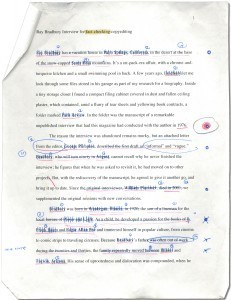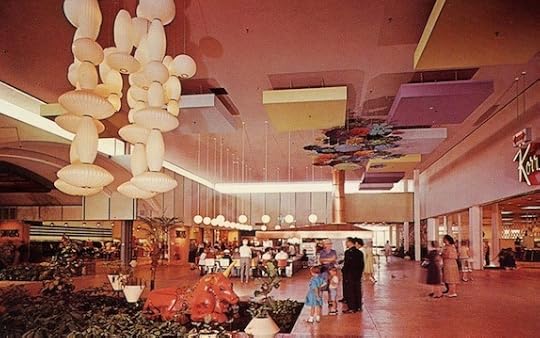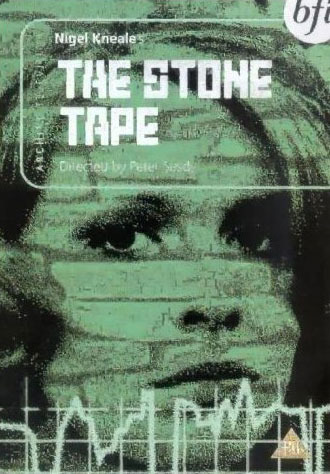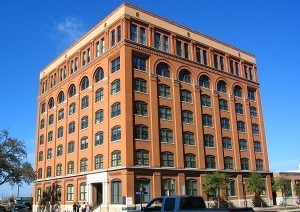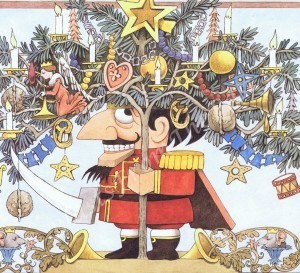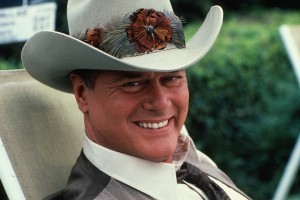The Paris Review's Blog, page 861
December 25, 2012
Fact-checking Ray Bradbury
We’re out this week, but we’re re-posting some of our favorite pieces from 2012 while we’re away. We hope you enjoy—and have a happy New Year!
I didn’t grow up reading The Paris Review. My earliest encounter with the magazine—I’m somewhat ashamed to admit—came in graduate school, when I stumbled upon an interview with Milan Kundera. (I was writing a paper on translation, and the quote I pulled didn’t even make it into a footnote.) Had you asked me, a year or so later, when I found myself applying for an internship, what the magazine meant to me, I wouldn’t have given you an honest answer. It didn’t mean much of anything to me. I wanted a foot in the door in New York, and The Paris Review’s seemed as good a door as any.
The latest issue, 191, had closed just before I started, so my first few weeks were quiet. I read submissions, delivered packages, distributed the mail. Then came my first real assignment: We were running an interview with Ray Bradbury, and it needed fact-checking. I volunteered.
Where Daisy Buchanan Lived

Conway Farms Golf Club, Lake Forest, IL.
We’re out this week, but we’re re-posting some of our favorite pieces from 2012 while we’re away. We hope you enjoy—and have a happy New Year!
In a 1940 letter to his daughter written six months before his death, F. Scott Fitzgerald said, “Once I thought that Lake Forest was the most glamorous place in the world. Maybe it was.” Sixty-six years later, as I drove through the Illinois suburb that sits thirty-two miles north of the heart of Chicago’s Loop, I kept looking around and wondering to myself what exactly it was that Fitzgerald found so great. I thought about him as I drank a coffee at a Starbucks that wasn’t there the last time I’d visited, and I noticed that the McDonald’s drive-through near the Metra train station seemed to be buzzing. All the suburban trappings I recalled from a childhood spent on the North Shore of Chicago were still there. To me, Lake Forest was a place I’d gotten to know by peeking through frosted car windows on my way to early morning hockey practice as a kid. Cozy, definitely, but not exactly the sort of place I associate with the Roaring Twenties decadence and wild parties conjured by Fitzgerald’s name.
Founded in 1861, Lake Forest, Illinois, was originally built as a college town by Presbyterians. After the Civil War, the city attracted residents whose last names were synonymous with the building (and a decade later, the post–Great Fire rebuilding) of Chicago. Thanks to its tranquility and natural beauty, as well as its isolation from main roads, Lake Forest became the Chicago metropolitan area’s most desirable neighborhood, attracting Rockefellers, Armours, Medills, and Marshall Fields. Lake Forest was the Greenwich of the Midwest: a haven for robber barons and meat packers far from the strikes, riots, and muckrakers that threatened the wealth and safety of the early twentieth century’s 1 percent. By the city’s 150th anniversary, in 2011, Lake Forest had served as the setting for a best-selling novel (A Heartbreaking Work of Staggering Genius, by native son Dave Eggers) and Oscar-winning film (Robert Redford’s Ordinary People). But the city’s first true claim to literary fame came in 1925, as a passing mention in the first chapter of The Great Gatsby, in which we learn from narrator Nick Carraway that Tom Buchanan has bought a string of polo ponies from Lake Forest. Carraway is amazed that a man of his own generation is wealthy enough to have done so.
December 24, 2012
Pleasure Domes with Parking
The Court of Flowers, postcard.
We’re out this week, but we’re re-posting some of our favorite pieces from 2012 while we’re away. We hope you enjoy—and have a happy New Year!
Because my grandfather owned a men’s clothing store and my dad briefly worked for him, I spent a lot of my childhood in malls. Hanging around malls is already a tradition in Phoenix, Arizona, where I grew up. It’s as central to life as driving and eating Mexican food, a habit stemming from a mix of materialism, a reflexive tendency to “pass time,” and a very practical need for air conditioning. But it was also a habit born of an era when malls adorned themselves in gaudy architecture and country-and-western motifs, presented themselves as shopping experiences rather than just places to shop, and capitalized on Americans’ aspirations toward glitz and glamour. I can’t enter one of the predictable, interchangeable modern retail spaces without thinking of the heyday of the mall, a period when, to borrow the title of a Time magazine article, malls were “Pleasure-Domes with Parking.”
I saw none of these touches of class in person. I was born in 1975, and by then malls had changed. As I experienced it, my Grandpa Shapiro’s store, The Habber Dasher, was adjacent to the food court, an echoey hall enlivened by the greasy orange aroma of Pizza D’Amore and the sweet froth of Orange Julius, as well as Kay Bee Toys, the Red Baron video-game arcade, and the movie theater. My time at the mall was spent buying shockingly lifelike diecast metal cap guns at Kay Bee and then eating free samples of slow-cooked meat from the tiny gyro stall, staring in horror at the hard, sunken eyes of the whole smoked fish in Miracle Mile Deli’s cold case, or looking up at the tall escalator that led into UA Cinema. When I walked through the open, indoor plaza where Santa Claus sat in a huge Styrofoam Wonderland, surrounded by polymer wads of fake snow while the sun shone outside, I had no clue that malls could be anything but what they were then, that they had any history at all.
In fact, shopping arcades and centers existed in the Western World as early as the 1920s. The classic, fully enclosed form now known in America as “the mall” debuted in Edina, Minnesota, in 1956. An Austrian-American architect named Victor Gruen designed the so-called Southdale Center, and it became the de facto prototype for a wave of enclosed, temperature-controlled shopping complexes structured around big name “anchors” and interior garden spaces. Read More »
The Timid Investigators: An Homage to Roberto Bolaño

Illustration by Hache Holguin.
We’re out this week, but we’re re-posting some of our favorite pieces from 2012 while we’re away. We hope you enjoy—and have a happy New Year!
Then Maria came in and I said do you want café or café con leche, and then Bebe came in and I said do you want a café con leche or a mescal. Maria said she wanted a mescal with a fat worm and then Bebe said she wanted a clear tequila, then Maria said Verlaine is a better poet than Rimbaud who turned Verlaine from anapest to pederast, then Luiz came in with a kitchen knife and started cutting his dick right in front of us, but when Maria, who came from Xochimilco and whose father was a tram conductor and whose mother had run a small brothel in Taxco before she saw the light of Jesus and married and had Maria and several other Brats as Maria called them, and Maria said stop cutting that huge magnificent dick of yours or at least don’t do it here in the kitchen, and Luiz said he was going to start a magazine and publish only nuns and queers. Fuck you, I said, fuck you, chinga tu madre! Then two guys I didn’t know came in high from pot and giggling like tweens, Maria said hello Paco, hello Paquito. They were the twins from Guadalajara and wrote for a magazine called Anal Retention and they were stars in the poetry world faction that sided with Quevedo against Gongora and said they would stomp anyone who read that pussy Quevedo, but they were frail and I could not imagine their stomping a sleeping cockroach drunk on pulque, then I said, Hey! Twins, you want a café solo or a café con leche or a diet Coke or a zero Coke or maybe a Fanta lite, or maybe an Aztec cola but just then Maria took me by the arm and said come with me, I have to tell you something. And we went to the bedroom where a young woman was sleeping off the night before and Maria said don’t mind her, that’s just Silvina, she’s blind and gives handjobs for five pesos, and an extra five if you come on her face. She must make a lot of money I said. She does, she’s rich and owns property in Pedregal and in Chapingo but nobody knows so don’t tell, anyway I wanted you to know I don’t love you and that I will never sleep with you no matter what you do so don’t write any poems for me because that won’t work the way it did when you fucked my sister, Leche de Amor—I never fucked her I said. Yes you did she said, Carlota el Camino told me and Leche de Amor told her. I saw bright lights flash in the window, then the slam of a car door, then two huge guys the size of shipyards barged in pistols in hand. “Where is that faggot Noche de Azul?” one said, spitting out a plank of a toothpick cut from plywood.
“Where is that Quevedo faggot?” the one with the flat nose said; “We have a little present for him,” the other with a flatter nose said.
“Who’s looking?” I asked.
“The Gongora twins,” they answered with flames.
December 21, 2012
Keep Me in the Loop, You Dead Mechanism
What’s Christmas without some ancient demons embedded in the chimney? On the evening of December 25, 1972, BBC viewers celebrated the birth of Christ by being scared to death. They learned that their homes could be resonating with discarnate traumas absorbed over centuries, that the limestone walls have been listening, recording, and screaming—and that the ghost of Christmas past had been using their minds as its personal VCR. Scripted by Nigel Kneale, The Stone Tape is about a British electronics company who’s in a race to beat Japan to a super washing machine and a groundbreaking recording medium based on the “magnetic susceptibility” of certain minerals and their capacity to retain terrible memories. Holed up in a Victorian mansion, the team of bickering scientists working for Ryan Electronics would discover that haunting was a new form of playback. Merry Christmas.
Kneale had grown up on the Isle of Man, home to a mongoose named Gef who could prove his own existence in six different languages, including Russian and Arabic. Kneale’s imagination flourished in television, a medium with a reputation for killing souls. His teleplays seemed intent on trying to out-weird each other: a taxidermist gets stuffed by a pond of vengeful toads; a man is choked to death by his own bike wreckage; a porn cinema is haunted by dolphins. He also gave us titles like “Vegetable Village,” “Clog-Dance for a Dead Farce,” and “The Big Big Giggle.” One of my favorite Kneale shows involves a frumpy supermarket cashier who enlists the store mascot—a woodchuck called Briteway Billy—to wage telekinetic war against her tyrant boss, pummeling him to death with nonperishable canned goods. How many soup cans can a supermarket woodchuck ghost hurl?
Dallas, Part 2: Up Close
Have you ever seen Dallas from a DC-9 at night?
Dallas is a jewel, Dallas is a beautiful sight.
And Dallas is a jungle, but Dallas gives a beautiful light.
—Jimmie Dale Gilmore, from the song “Dallas”
From a Boeing 737 on a sparkling fall day, Dallas looks like a patchwork of mottled greens and browns, the ground more rich and loamy than withered and sere, as if the coming winter were just nature’s way of winking. The lakes are murky, the land billiard-table flat, laced with former wagon trails that have now become thoroughfares. Approaching the city, cloned suburban houses sprout in rows that curl and stretch with predetermined whimsy, the pools, tennis courts, and golf courses popping up at neat intervals. Divided expressways thread through the map, the roads laden with cars, pickups, motorcycles, and semis all going, going, going, even on a Sunday, even on a football Sunday.
I am flying into Love Field, an airport that has served Dallas since 1917, when the army named the flying field after First Lieutenant Moss Lee Love, who crashed and died in his Type C Wright pusher biplane four years earlier. Kennedy landed at Love Field at 11:37 A.M. on November 22, 1963. It is a Texas State Historical Site. I am flying into history.
What We’re Loving: Nutcrackers, Louie, Bing
“He is at once too cynical, too sincere, and too weird for schmaltz”: Paris Review special Mad Men correspondent Adam Wilson turns his gaze on Louie over at the L.A. Review of Books. —Lorin Stein
This hallucinatory Christmas duet between David Bowie and Bing Crosby has become, thank God, an improbable standard, but the story behind it deserves some extracurricular reading. Peruse to deepen your experience of this seasonal wormhole as it collapses the distance between genres and generations and renders our edgy Ziggy saccharine as a candy cane. That snow-white tan is just snow, and the only things that look especially well hung are the stockings. —Samuel Fox
Grass Libraries, and Other News
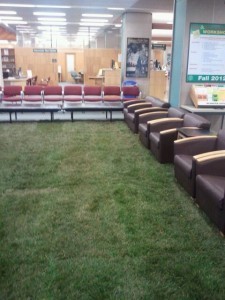
Cornell has installed an indoor grass library.
Reading habits across America.
Speaking of: writers who do not live in Brooklyn.
The OED apologizes for insensitivity.
More apocalyptic reading.
December 20, 2012
Holiday … Cheer?
Earlier today, Edward McPherson wrote about his hometown for the Daily. In keeping with that post, enjoy the following clip from Dallas, which, as the poster informs us, is the only time Christmas was ever mentioned in the series.
Dallas, Part 1: From Afar
Between 318 and 271 million years ago, the ancient continental core of North America butted against what would become South America. Land folded and faulted; mountains were born. Then what would become the Gulf of Mexico opened, and inland seas washed the peaks away. It pays to remember there are mountains beneath Dallas. The tops may have eroded, but the roots remain buried deep.
Some 165 million years later—in 1841—John Neely Bryan built a shelter on a bluff and called the area Dallas.
One hundred and twenty-two years later—in 1963—John F. Kennedy was shot on that bluff, now named Dealey Plaza.
Seventeen years later—in 1980—J. R. Ewing was shot on TV.
The Paris Review's Blog
- The Paris Review's profile
- 305 followers


